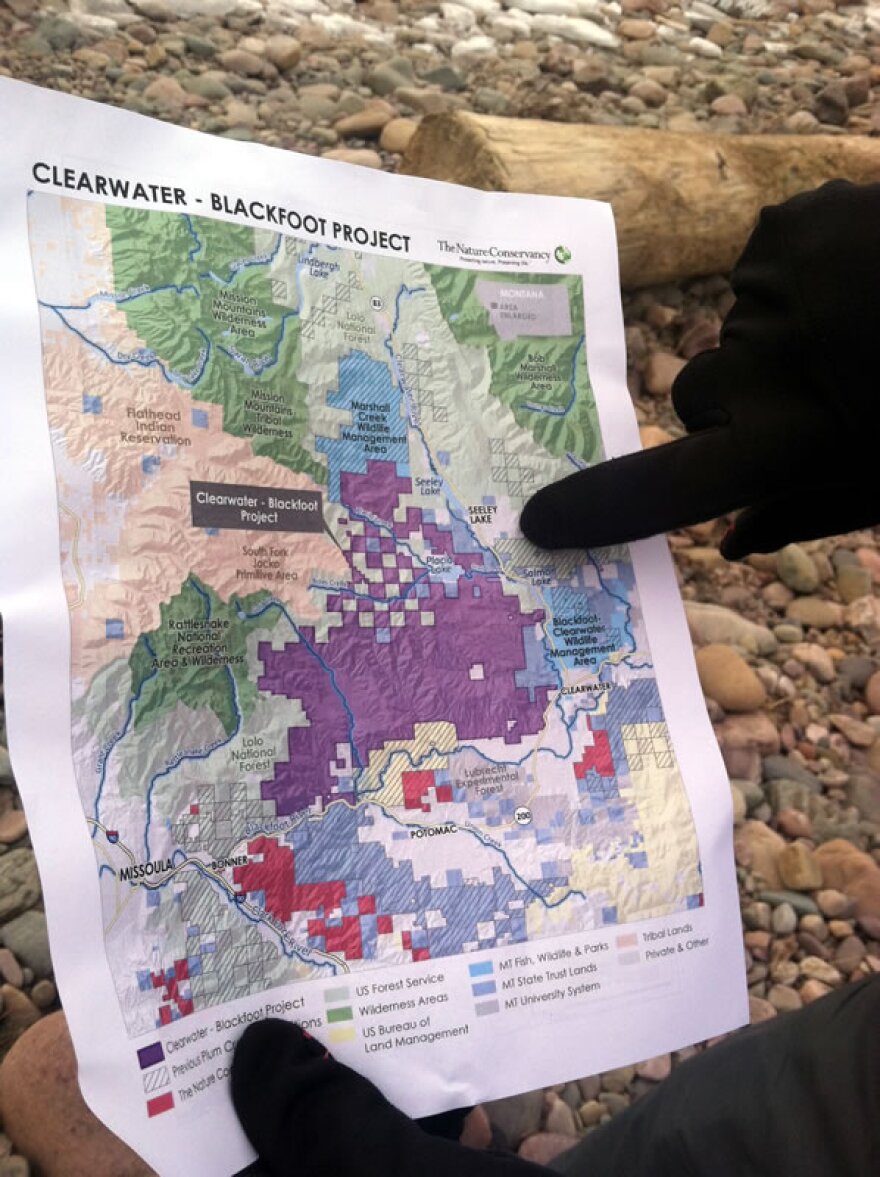The non-profit Nature Conservancy has closed on an $85 million deal, to buy more than 250 square miles from Plum Creek, the nations largest private landowner. The purchase includes a significant portion of the Lower Blackfoot Watershed.
It’s a 117,000 thousand acre stretch located within what’s known as the Crown of the Continent, a portion of the Rocky Mountains extending from northern Montana into Canada.
Chris Bryant, a land protection specialist with the Montana Chapter of the Nature Conservancy, says his group’s ownership is only temporary, and the long-term goal is conservation.
“In the past we’ve sold the land to public agencies. Sometimes private neighbors will buy it and expand their operations with conservation easements on it."
Bryant says this is the last piece of Plum Creek owned land in the area, and that all of the land will open to recreationists, hikers and hunters. Which is good news for local business owners. Bryant says feedback from the area so far has been good.
Addrien Marx, owner of two Conoco stations in Seeley Lake and a Montana Wilderness Association council member says she’s thrilled.
"As a business person it means that the timber people, the mill, outfitters, people that recreate there, whether it's snowmobiling or hiking or hunting, or fishing, everybody has the potential to make this whole watershed work for all those different interests.”

The Nature Conservancy has purchased land inside the Crown of the Continent before: More than 300,000 thousand acres in 2008. Today’s purchase is part the group’s Clearwater-Blackfoot Project which they say is vital to preserve wildlife, forests, and water in this area.
Now that the watershed has only one owner, it eliminates that checkerboard pattern you might see on a state forest service map. In some parts of Montana, landowners can change three times in three miles, and the Nature Conservancy’s Bryant says those checkerboards are often a land management hassle. For example, different landowners can have different priorities for roads.
“Often times the road network is built taking into account these one-mile squares, not taking into account watershed attributes or future travel planning. And so now, on some of these lands we have an opportunity to think about them as a whole.”
The purchase is part of the Conservancy’s $134 million, two-state Great Western Checkerboards Project, which they say will preserve recreational access and the ecosystem across more than 250 square miles in Montana and the Cascade Mountains of Washington.


